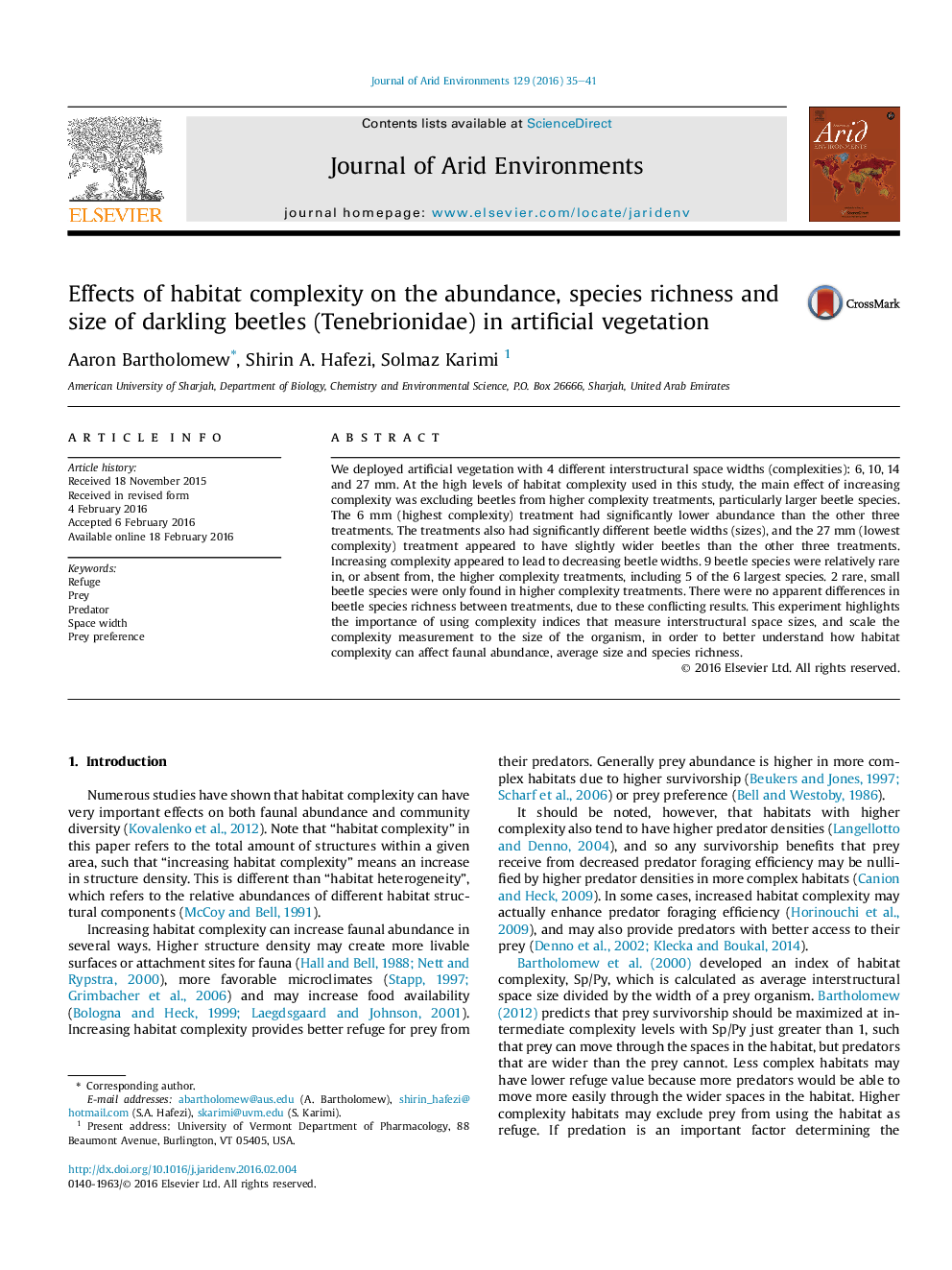| Article ID | Journal | Published Year | Pages | File Type |
|---|---|---|---|---|
| 4392742 | Journal of Arid Environments | 2016 | 7 Pages |
•Beetle abundance was significantly lower in the highest complexity treatment.•Beetle size appeared to decrease as habitat complexity increased.•Some large species were at least partially excluded from high complexity treatments.•There was no effect of complexity on species richness or rarified species richness.
We deployed artificial vegetation with 4 different interstructural space widths (complexities): 6, 10, 14 and 27 mm. At the high levels of habitat complexity used in this study, the main effect of increasing complexity was excluding beetles from higher complexity treatments, particularly larger beetle species. The 6 mm (highest complexity) treatment had significantly lower abundance than the other three treatments. The treatments also had significantly different beetle widths (sizes), and the 27 mm (lowest complexity) treatment appeared to have slightly wider beetles than the other three treatments. Increasing complexity appeared to lead to decreasing beetle widths. 9 beetle species were relatively rare in, or absent from, the higher complexity treatments, including 5 of the 6 largest species. 2 rare, small beetle species were only found in higher complexity treatments. There were no apparent differences in beetle species richness between treatments, due to these conflicting results. This experiment highlights the importance of using complexity indices that measure interstructural space sizes, and scale the complexity measurement to the size of the organism, in order to better understand how habitat complexity can affect faunal abundance, average size and species richness.
